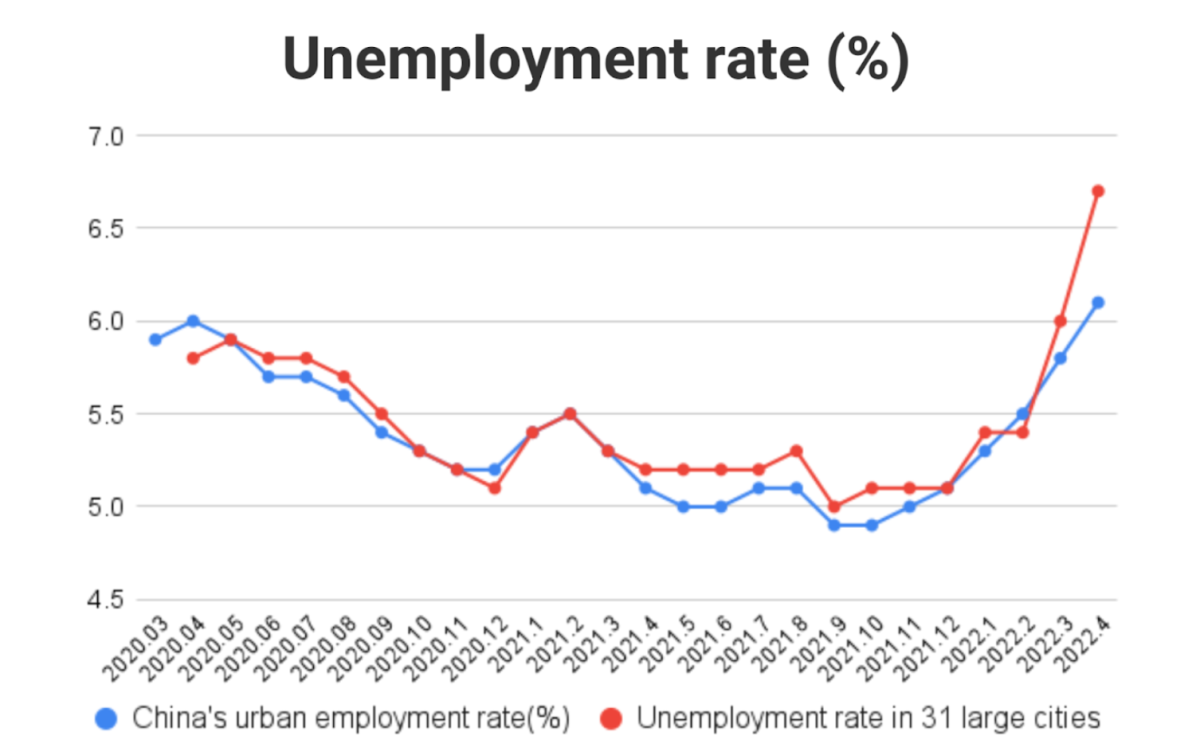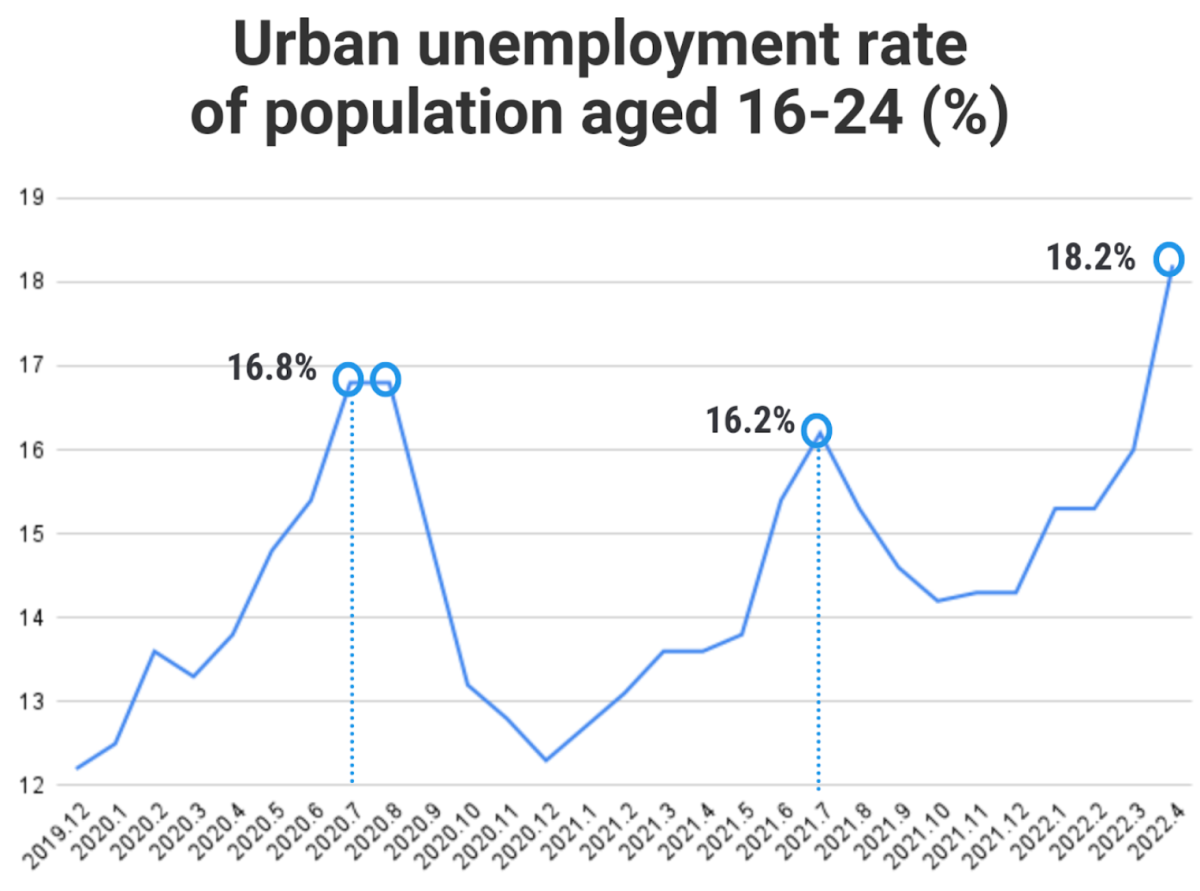In this edition: Shanghai resumes production; SHEIN business model creates e-commerce competition affecting workers’ livelihoods; several workers at manufacturing conglomerate BYD commit suicide in Changsha; Meituan introduces workplace safety measures for delivery drivers; migrant and youth unemployment rates rise; and the Vocational Education Law gets a revision.
Unsteady business resumption in Shanghai
Shanghai’s lockdown caused the auto industry to significantly reduce production last month. Now, companies are recalling workers in a bid to resume production. China News Weekly reported that auto workers in Shanghai’s western district of Jiading tested positive for Covid-19 after returning to work. Inconsistencies in the supply chain led to some workers doing overtime, while others have been left with little to do. Bloomberg obtained an internal Tesla memo which said that “because of insufficient dormitory space, workers had to sleep on the factory floor.” The memo added that “Tesla provides workers with showers, three meals a day, and a subsidy of $63 per day (around 420 yuan), as well as recreational facilities.” However, with production ramping up, workers are unlikely to have time to enjoy entertainment.
There were two worker protests in an Apple Macbook supplier in the Quanta Shanghai Manufacturing City complex. Locked down in the factory, some employees were diagnosed with Covid-19 because inadequate pandemic prevention measures led to the virus spreading through dormitories. Workers who had been locked in the factory for a long time created a “disturbance,” and managers said that some workers wanted to return to their hometowns or had disputes over overtime pay and so directed their frustrations at factory managers.

Competition among cross-border fashion e-commerce suppliers heats up
Fast fashion brand SHEIN's business took off during the pandemic. The business model has required suppliers to make increasingly innovative products to corner the mid-to-high-end market. SHEIN deducts points from suppliers whose product quality does not meet standards. Manufacturers said that SHEIN offers them slim profit margins, and they feel that they are producing free products for SHEIN time and time again.
Since March, SHEIN’s bid to lower prices has become increasingly serious. When certain styles prove popular, personnel review fabric prices and lower prices for fabrics which fail to meet quotation requirements. SHEIN has faced serious competition in the fashion industry, which has a knock-on effect on the work pressures for those in the industry. Some factories will lose orders and close, affecting the livelihoods of their workers.
Series of worker suicides at BYD factory in Changsha
BYD is an automobile and electronics manufacturing conglomerate headquartered in Shenzhen. Multiple employees at BYD’s plant in Changsha committed suicide on 19, 25, and 26 April. An unverified suicide note was leaked to the media, in which the deceased employee cites a gambling addiction.
BYD’s factory has been involved in 33 labour disputes, as well as disputes over rights to life, health and body. Local residents have complained about odours coming from the factory and suspect that waste discharge has caused residents to have nosebleeds and sore throats.
Meituan revises algorithms to adjust the work intensity of delivery drivers
Meituan has announced rules for “driver work safety protection.” The company will cut down on “irregular scenarios” and introduce a “one-time supplementation and system correction” mechanism to extend delivery times. This will allow drivers to set a limit for the number of orders they are handling at the same time, and it will adjust the way drivers receive orders by introducing functions within the app to re-dispatch, transfer orders, and modify status to “busy.”.
The Paper reported that the company also plans to issue 100,000 smart helmets. The inbuilt Bluetooth functionality allows drivers to answer calls by pressing the shortcut button on the left side of the helmet. The system automatically answers the call if no action is taken. The aim is that actions like making calls, which previously happened between delivering orders, would be taken over by an automated system.
Unemployment rates rise for migrant workers and young people
National Bureau of Statistics data released on 16 May shows that the national urban unemployment rate rose to 6.1 percent in April, a new high since March 2020. Job market prospects have returned to the same levels as at the outbreak of the pandemic. The unemployment rate continued to rise from October 2021, when it stood at 4.9 percent. After the Lunar New Year, when workers typically switch jobs, the unemployment rate continued to climb. Lockdowns and production disruptions have directly affected job-seekers. Some data platforms estimate that the floating population of 200 million workers was static in April. The urban unemployment rate in 31 large cities rose to 6.7 percent, the highest in history.

Migrant workers with hukou and young people aged 16 to 24 saw the most marked unemployment rate increases. The former saw the unemployment rate grow from 5.1 percent in January to 6.9 in April, an increase of 35 percent, compared to the far smaller rise of 5.6 percent for local residents. This reflects the scattered and unstable nature of jobs migrant workers take. Their jobs are often the first to be affected in lockdown situations.
High unemployment among young people is a prominent trend. The surveyed unemployment rate for the 16 to 24 age group hit 18.2 percent in April, the highest on record and nearly double the April 2019 figure of 9.9 percent. Unemployment rates for this age group usually peak in July and August as students graduate. Whether youth unemployment will continue to break highs is worth watching. In 2022, 10.76 million students graduated, an increase of 18 percent from 2021.

Recruitment website Zhaopin found that the employment outlook index for college graduates in the first quarter of this year was about half that of the same period last year, and lower than in 2020, at the start of the outbreak. Recruitment demands for college graduates has decreased month-on-month and also year-on-year, but the number of job-seekers has risen. In the first quarter the year-on-year increase stood at 75 percent. The average monthly salary for graduates who landed jobs is 12 percent lower than last year.
Amended Vocational Education Law came into force on 1 May
The newly revised law came into effect at the beginning of this month. The issue of eliminating the distinction between secondary schools and secondary vocational schools stirred debate. After middle school, the proportion of students admitted to ordinary high schools and vocational high schools was roughly equal and this policy continued for many years. The new law stipulates adapting measures to local conditions and making overall plans to promote coordinated development of vocational and general education. The distinction of vocational and general education still exists, but there are fewer mandatory policies.
The new law’s stipulation that students can go to university after studying in vocational schools also drew attention. This may encourage the idea that only educational qualifications matter. Implementation of paying attention to employment and further education still depends on how many students enrol in vocational schools, the quality of schools and the career development of students.
The exploitation of vocational students in corporate internships has been a long-standing problem. Students are often assigned to internships unrelated to their majors and become cheap labour. In February, a vocational student from Yunnan died suddenly after working overtime. The new law has provisions on protecting the rights and interests of students but its actual effect remains to be seen.
